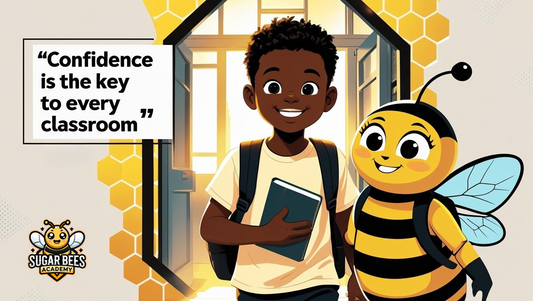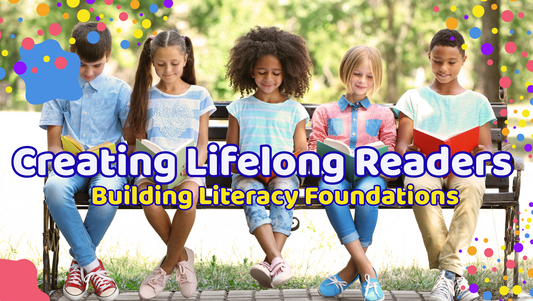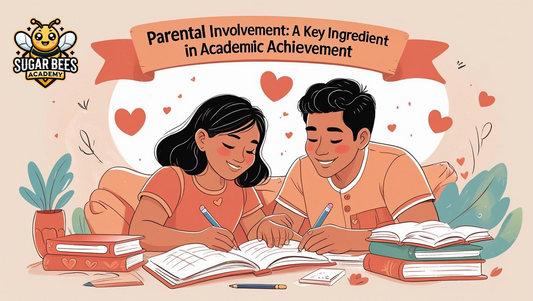
Supporting Neurodivergent Learners: Inclusive Practices at Sugar Bees Academy
Share
Every child learns differently, and at Sugar Bees Academy, we believe that these differences should be celebrated and supported. Neurodivergent learners—those with autism, ADHD, dyslexia, and other learning differences—bring unique perspectives and talents to the classroom.
Our mission is to provide an inclusive environment where all students feel valued and empowered to succeed. This blog will explore the inclusive practices we use at Sugar Bees Academy to support neurodivergent learners and how these approaches foster growth, confidence, and success.
What Does It Mean to Be Neurodivergent?
The term neurodivergent refers to individuals whose brain processes information differently. This includes conditions such as:
• Autism Spectrum Disorder (ASD)
• Attention Deficit Hyperactivity Disorder (ADHD)
• Dyslexia and Dyscalculia
• Sensory Processing Disorders
• Other cognitive and developmental differences
At Sugar Bees Academy, we view neurodivergence as a strength. Our goal is to provide tailored support that helps every child shine.
Challenges Faced by Neurodivergent Learners
Neurodivergent students often face barriers in traditional educational settings, including:
• Difficulty focusing in structured environments.
• Sensory sensitivities to lights, sounds, or textures.
• Struggles with reading, writing, or mathematical concepts.
• Social challenges or feelings of exclusion.
By understanding these challenges, we can create an environment that meets their unique needs and fosters success.
Inclusive Practices at Sugar Bees Academy
1. Personalized Learning Plans
At the heart of our approach is the creation of individualized learning plans tailored to each student’s strengths and challenges.
How It Works:
• Comprehensive assessments identify learning preferences and needs.
• Educators design strategies to address areas of difficulty while building on strengths.
• Plans are continuously reviewed and adapted as the child progresses.
Example: For a student with dyslexia, we might incorporate audiobooks and assistive technology to enhance their reading experience.
2. Sensory-Friendly Environments
A comfortable environment is crucial for neurodivergent learners. At Sugar Bees Academy, we create sensory-friendly spaces that reduce overstimulation and promote focus.
Key Features:
• Quiet zones for breaks and relaxation.
• Adjustable lighting to accommodate sensory sensitivities.
• Fidget tools and sensory-friendly classroom materials.
3. Emphasizing Strengths
We believe that every child has unique talents. By focusing on what neurodivergent learners excel at, we help them build confidence and a love for learning.
Practical Example: A student with ADHD who thrives in hands-on activities might be encouraged to lead a science experiment or art project.
4. Collaboration with Families
Supporting neurodivergent learners is a team effort. We work closely with families to ensure consistency between home and school.
How We Collaborate:
• Regular communication about progress and challenges.
• Parent workshops to share strategies for supporting neurodivergent children.
• Providing resources for at-home learning.
Pro Tip for Parents: Share insights about your child’s preferences and triggers with educators to create a cohesive support system.
5. Social Skills Development
Building strong social connections is a priority at Sugar Bees Academy. Through structured activities and peer mentoring, we help neurodivergent learners develop confidence in their interactions.
Key Strategies:
• Role-playing exercises to practice communication.
• Peer buddy programs to foster inclusion and friendships.
• Group activities that emphasize collaboration and teamwork.
Success Stories from Sugar Bees Academy
Case Study 1: Thriving with Autism
A student on the autism spectrum struggled with sensory sensitivities and social interactions. With tailored support, including sensory tools and a peer mentoring program, they became more comfortable and engaged in group activities.
Case Study 2: Unlocking Potential with ADHD
A child with ADHD flourished after we incorporated movement-based learning strategies into their routine. Their ability to focus and complete tasks improved significantly, boosting their confidence.
Why Inclusivity Matters
Inclusive education benefits everyone, not just neurodivergent learners. By fostering empathy, understanding, and collaboration, we create a supportive community where diversity is celebrated.
Benefits of Inclusive Education:
• Promotes a sense of belonging for all students.
• Encourages creativity and problem-solving through diverse perspectives.
• Prepares students for real-world interactions with people from all walks of life.
Join the Sugar Bees Academy Community
At Sugar Bees Academy, inclusivity is more than a philosophy—it’s a commitment. We are dedicated to creating an environment where neurodivergent learners can thrive, feel valued, and achieve their full potential.
Explore our programs and see how we’re redefining education to celebrate every child’s unique abilities.
Conclusion
Supporting neurodivergent learners requires understanding, creativity, and a commitment to inclusivity. At Sugar Bees Academy, we are proud to lead the way in creating a nurturing environment where all students can succeed.
If you’re ready to empower your child with an education tailored to their needs, visit Sugar Bees Academy today and discover the difference inclusive practices can make.



